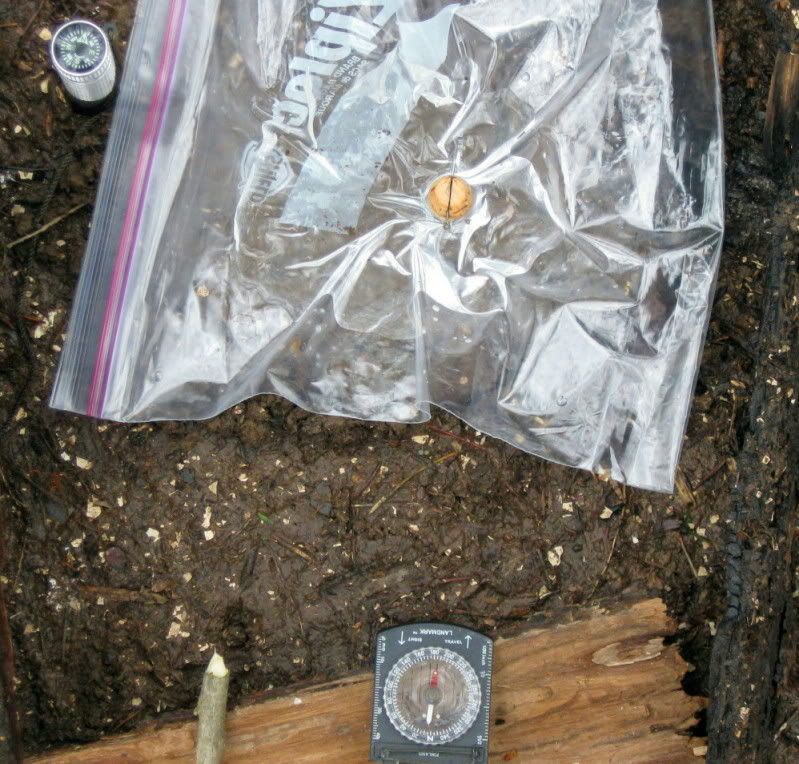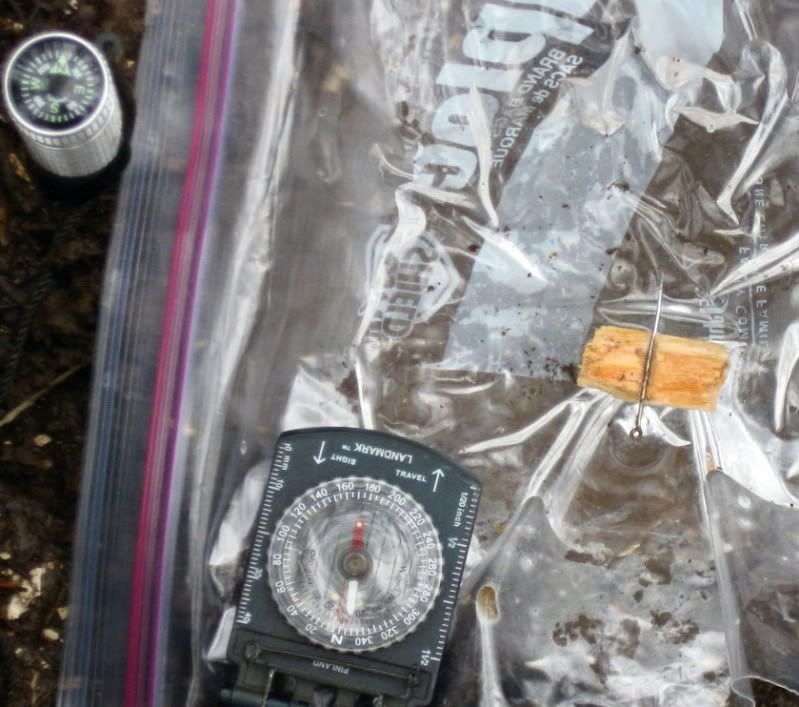Here is another reason for packing along a small fishing kit in your pack when out and about.

Fish hooks are good for more things than just catching fish. For one you can straighten them, grind off the barb and flatten the eye and you have a functioning needle for digging out splinters even sewing... it will work, but the eye is still a pain in the neck even after flattened. Secondly with a couple of other things they can help you find your way. Most of us carry a compass of one kind or another when we hit the woods.

But what if it gets lost or broken? Yes you can roughly gauge direction looking at the growth of the flora, and yes you can figure it out using the sun if it is visible, but here is another way. This... and some water... is all you need to throw together a quick field expedient compass.

First straightens the hook. This is easier to do with pliers but can be done with a split twig.


Next you'll need a small piece of cork or wood that will float. Cut a slice across the center of the mass deep enough to seat the hook in. Then holding the straightened hook point out scrape the tip end with a knife quickly and with some pressure, scraping away from your body and toward the tip several times.

Then push the hook into the slice and it should look something like this.


Next you need a pool or non-metallic container of water. If there are none handy you can make your own pool of water if you have a ziploc bag or other piece of plastic...even a space blanket. Just dig a small depression in the ground, line with the plastic, add water, the set the piece of wood with the hook in it on the surface of the water (wind is not your friend here, it will push your "compass" to the side).


YouTube - Improvised Compass-2
In a more urbanized area you could use a saucer or cup. Needles also work like this but so far no luck with paper clips.

YouTube - Improvised Compass-1

Fish hooks are good for more things than just catching fish. For one you can straighten them, grind off the barb and flatten the eye and you have a functioning needle for digging out splinters even sewing... it will work, but the eye is still a pain in the neck even after flattened. Secondly with a couple of other things they can help you find your way. Most of us carry a compass of one kind or another when we hit the woods.

But what if it gets lost or broken? Yes you can roughly gauge direction looking at the growth of the flora, and yes you can figure it out using the sun if it is visible, but here is another way. This... and some water... is all you need to throw together a quick field expedient compass.

First straightens the hook. This is easier to do with pliers but can be done with a split twig.


Next you'll need a small piece of cork or wood that will float. Cut a slice across the center of the mass deep enough to seat the hook in. Then holding the straightened hook point out scrape the tip end with a knife quickly and with some pressure, scraping away from your body and toward the tip several times.

Then push the hook into the slice and it should look something like this.


Next you need a pool or non-metallic container of water. If there are none handy you can make your own pool of water if you have a ziploc bag or other piece of plastic...even a space blanket. Just dig a small depression in the ground, line with the plastic, add water, the set the piece of wood with the hook in it on the surface of the water (wind is not your friend here, it will push your "compass" to the side).


YouTube - Improvised Compass-2
In a more urbanized area you could use a saucer or cup. Needles also work like this but so far no luck with paper clips.

YouTube - Improvised Compass-1


